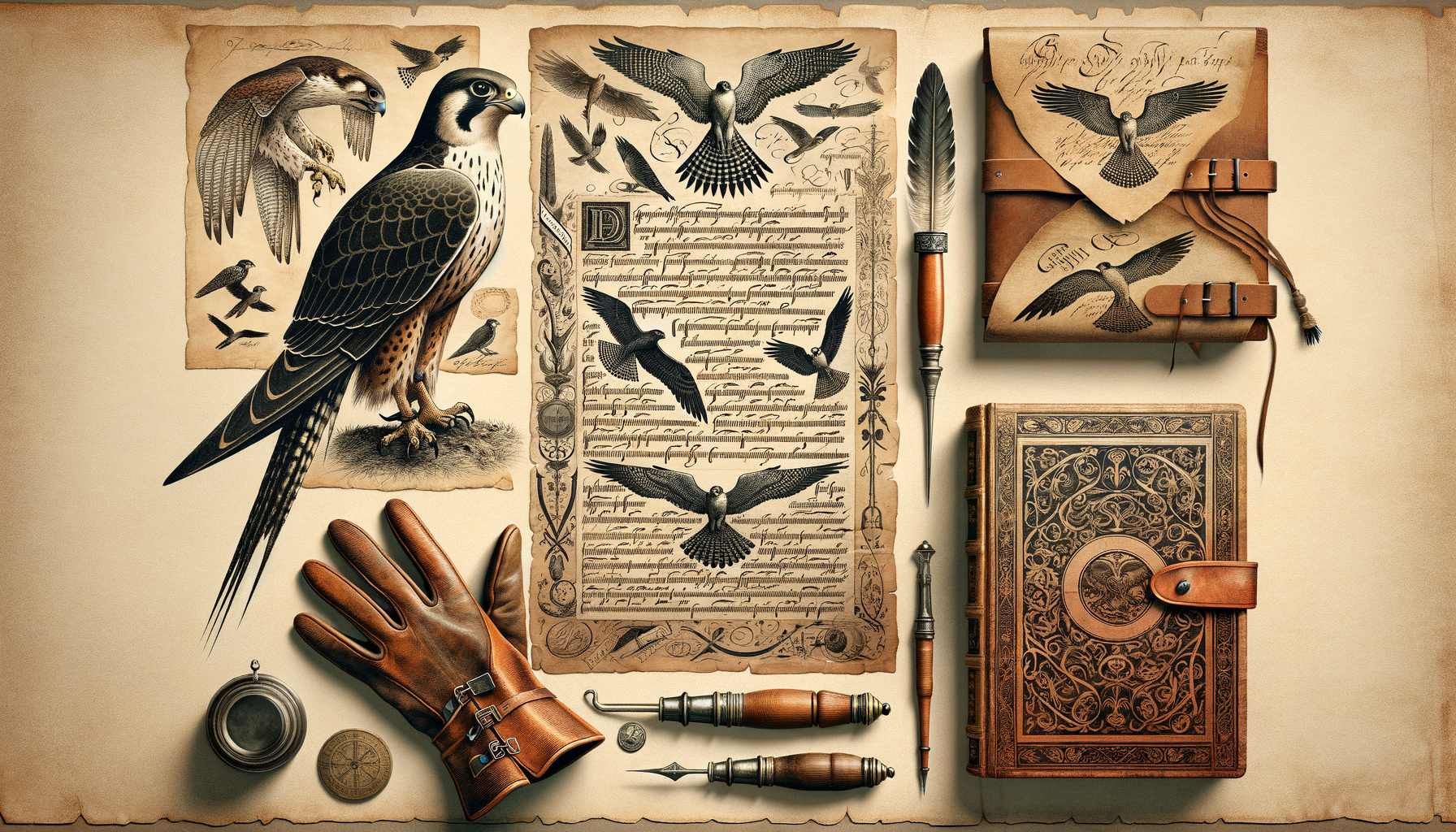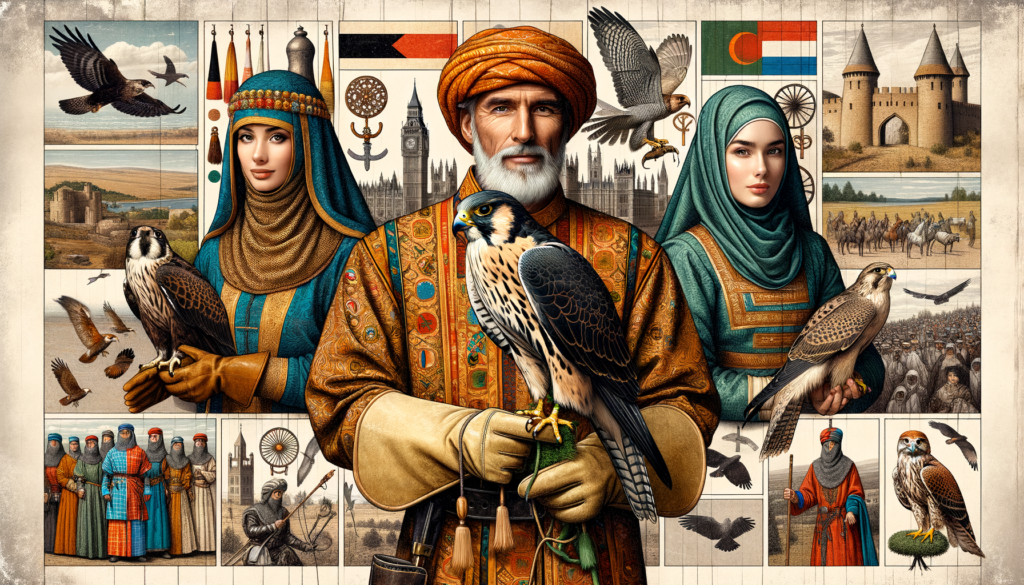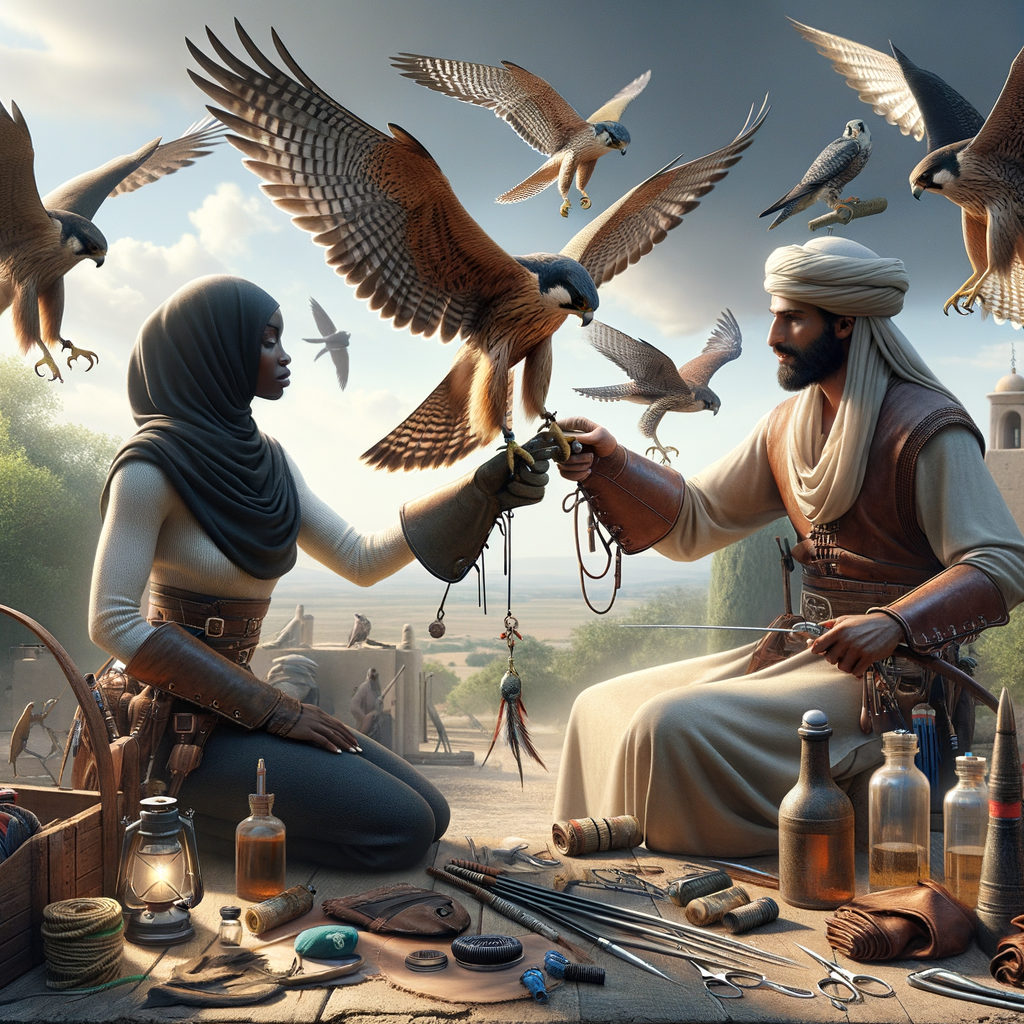Discover the Secrets of Historical Falconry
- Falconry has a rich history that dates back thousands of years.
- Early falconry manuals were crucial in teaching techniques and care for these birds.
- These manuals documented traditions, bird training methods, and hunting practices.
- Study of historical falconry reveals the bond between humans and birds of prey.
- Falconers used various species like falcons, hawks, and eagles for hunting.
- Techniques included luring, flying routes, and using hoods to calm the birds.
- Falconry was a skill passed down through generations, often within families.
- Manuals were often beautifully illustrated, highlighting the artistry of falconry.
- Historical falconry emphasized patience, skill, and respect for nature.
- Learn Falconry preserves these traditions while adapting them for modern times.
The Timeless Wisdom of Historical Falconry Manuals
In this article, we’re diving into these intriguing texts to uncover the rich history they hold. Think of it like finding an old, treasured map that leads to hidden knowledge about our feathered friends and the art of falconry. By keeping the stories and expertise in these manuals alive, we preserve a part of history and continue to learn invaluable lessons for modern falconry practices.
Get ready to be charmed and educated by the lore and lessons contained in these historical falconry manuals, and discover why their teachings are still relevant and exciting today!
The Significance of Historical Falconry Manuals
Falconry, the art of training birds of prey to hunt, has a rich and fascinating history. One of the most captivating aspects of this history is the collection of old falconry manuals, also known as historical falconry books or ancient falconry guides. These texts offer invaluable insights into the techniques, equipment, and cultural significance of falconry across different eras and regions.
Understanding Old Falconry Manuals
Old falconry manuals are like time capsules that help us understand how ancient falconers practiced their craft. These books contain detailed instructions on several key aspects of falconry, including training methods, care for the birds, and the types of equipment used. For example, https://www.learnfalconry.com/falconry-equipment highlights traditional tools like hoods, bells, and gloves that are frequently mentioned in these ancient texts.
Historical Falconry Books Through the Ages
Historical falconry books were often written by expert falconers who shared their knowledge and experiences. These books have documented the evolution of falconry from its ancient origins to its development in regions like medieval Europe, the Middle East, and Asia. Notable historical figures and royalty often patronized falconry, viewing it as both a sport and a status symbol. You can learn more about the historical significance of falconry in royalty by visiting https://www.learnfalconry.com/history-of-falconry/royalty-and-falconry.
Ancient Falconry Guides: A Treasure Trove of Knowledge
The ancient falconry guides are not just about the techniques of falconry but also delve deeply into the cultural and ethical aspects of the practice. They discuss the importance of trust and respect between the falconer and the bird, highlighting an early understanding of ethical treatment. For a more modern take on these ethical considerations, check out https://www.learnfalconry.com/ethical-falconry.
The Practicality and Craftsmanship in Old Falconry Manuals
Besides their historical and cultural significance, these old falconry manuals provide practical knowledge that can still be used today. They often include illustrations of various falconry techniques and equipment design, enabling modern falconers to appreciate and sometimes replicate ancient practices. Visit https://www.learnfalconry.com/training-a-falcon for an overview of contemporary training techniques that have evolved from these ancient methods.
Exploring the Legacy of Historical Falconry Manuals
The legacy of these historical texts continues to influence modern falconry in significant ways. They serve as foundational documents that support the traditions and practices upheld by contemporary falconers. These manuals offer a window into the past, teaching us how ancient falconers interacted with their environment, cared for their birds, and maintained a delicate balance in their ecosystems. For additional reading on the history and evolution of falconry techniques, visit https://www.learnfalconry.com/history-of-falconry/evolution-falconry-techniques.
By studying these old manuals, modern enthusiasts and practitioners can gain a comprehensive understanding of the profound and enduring bond between humans and raptors. Interested in learning more about the unique species of falcons commonly referenced in these historical texts? Explore https://www.learnfalconry.com/species-of-falcons for an in-depth look at the birds that have captivated human interest for centuries.
So if you’re interested in the fascinating history and practical wisdom embedded in these ancient guides, dive deeper into the world of historical falconry manuals and uncover the treasures they hold.
Historical Falconry Manuals: An In-Depth Look
Old falconry manuals generally provide a comprehensive overview of the sport, focusing on the training and handling of hawks and falcons. These manuals often include practical information on trapping, furniture, and hunting, as well as historical context and comparisons between different species. They are typically written by experienced falconers who draw on their own practical knowledge and research.
Practical Information in Falconry Manuals
Falconry manuals provide detailed instructions on the training and handling of birds of prey. This includes information on:
- Trapping: Techniques and equipment used to safely capture wild hawks and falcons.
- Furniture: The gear needed for falconry, such as hoods, jesses, and leashes.
- Hunting Techniques: Strategies for hunting with birds of prey, including how to properly release and recall them.
Example:
| Trapping Methods | Description |
|---|---|
| Bow Net | A net that is triggered to ensnare the bird. |
| Bal-chatri | A cage with nooses on top, baited to trap the bird. |
| Dho-gaza | A vertical net that a bird flies into and gets caught. |
Historical Context in Falconry
These manuals often include historical information about the sport, providing a timeline of its origins and evolution. Many falconry texts trace the practice back to ancient civilizations, highlighting how it has changed over time.
- Ancient Beginnings: Falconry is believed to have started in Mesopotamia around 2000 BCE.
- Medieval Europe: Falconry was particularly popular during the Middle Ages as a sport for the nobility.
- Modern Era: Focus on conservation and regulated hunting practices.
Comparisons Between Species
Historical falconry manuals frequently compare different species of hawks and falcons, discussing features such as:
- Temperament and Character: Which species are more aggressive or docile.
- Hunting Applications: Optimal prey types and hunting conditions for different birds.
- Training Difficulty: Easier vs. more challenging species to train.
| Species | Temperament | Ideal Prey | Training Difficulty |
|---|---|---|---|
| Peregrine Falcon | High-speed hunters | Birds | Moderate |
| Harris’s Hawk | Social and Cooperative | Small mammals | Easy |
| Gyrfalcon | Strong and Stamina | Large birds | Hard |
Academic Eloquence
The writing style of old falconry manuals is often formal and academic, showcasing the author’s vast knowledge and authority in the field. These texts are designed to both inform and impress, reflecting the expertise and dedication of experienced falconers.
Equipment and Care
While specific instructions on equipment setup or care are sometimes limited, these manuals often refer readers to other resources for comprehensive guidance. Essential equipment includes:
- Mews and Perches: Proper housing for birds.
- Hoods and Gloves: Specialized gear to protect the falconer and bird.
- Lures and Bells: Devices used to train and track the birds during flight.
Regional Focus
Many old falconry manuals are specific to particular regions, such as North America or Europe, and describe practices and regulations relevant to those areas.
Format and Size
Historical falconry books come in various formats, most commonly hardcover, with sizes typically ranging from 6.5″ x 9.5″ to 8″ x 10.1″ inches, making them durable and collectible.
Illustrations and Artwork
Ancient falconry guides often feature beautiful illustrations and artwork, depicting birds of prey, equipment, and hunting scenes. These visuals provide additional insights and help readers better understand the historical and practical aspects of falconry.
Example:
| Feature | Description |
|---|---|
| Color Photos | Realistic representation of birds and equipment. |
| Line Illustrations | Detailed drawings explaining techniques and tools. |
| Maps | Geographical insights into falconry practices. |
By delving into these specific aspects of historical falconry manuals, readers gain a thorough understanding of this storied sport and its rich traditions.
The Enduring Legacy of Historical Falconry Manuals
Historical falconry manuals are treasures that offer a rich and comprehensive look into the ancient sport of falconry. These guides are filled with practical advice on training, trapping, and hunting with birds of prey. They often include historical context, comparisons between different bird species, and expert recommendations for equipment setup and care. Their detailed illustrations and maps enhance our understanding of the sport’s past.
Authored by experienced falconers, these manuals reflect a deep well of knowledge and skill. They present formal yet informative content that ranges from the natural history and behaviors of various birds to specific training techniques. Whether you’re interested in the sport’s North American traditions or its broader historical scope, these guides serve as invaluable resources.
In short, historical falconry manuals not only teach but also preserve the rich heritage of falconry, making them essential for anyone truly passionate about this ancient sport.



